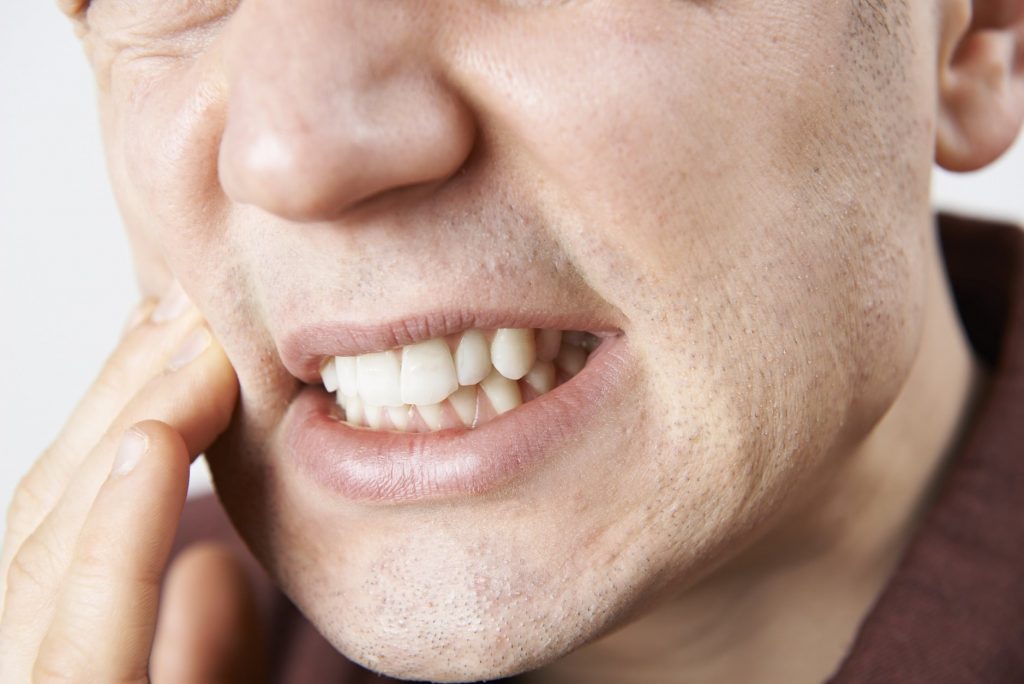Treatment of Teeth Clenching and Grinding and TMD
Teeth clenching and grinding, which is medically referred to as bruxism, is an unconscious habit that can cause lingering discomfort and even tooth damage. Not only do those who suffer from bruxism also tend to suffer from headaches, earaches, facial pain and other discomfort, they also tend to suffer from loss of tooth enamel, increased tooth sensitivity and even flattening or chipping of teeth. This is why individuals who suffer from bruxism need diagnosis and treatment–not only can they achieve better rest and reduce or eliminate the chance of experiencing discomfort and pain, they can also protect their teeth from damage.
Traditional bruxism treatments involve anti-inflammatory medications or the use of dental devices. While both of these options can help to protect against damage, neither of them actually address the source of the problem in order to prevent it from occurring. As a result, the individual may only experience some temporary relief from the problem of bruxism, and may actually still experience some of the more major side effects, such as jaw soreness and temporo-mandibular joint disorders, or TMD. Treatment, on the other hand, can work to treat the actual source of the problem, targeting and treating the excessive muscle activity and spasticity that creates teeth grinding, clenching and TMD.

Understanding Treatment Treatments
Teeth grinding and clenching problems are usually a result of tension and spasms in the masseter muscle, which is the large muscle that moves the jaw. This tension and these spasms are involuntary and normally occur while the individual is sleeping, though it occasionally also occurs while the individual is awake. The temporo-mandibular joint, or TMJ, is located on both sides of the head where the jawbone meets the skull, and is important to talking, eating, swallowing and other normal, daily oral functions. When the TMJ becomes overworked through excessive teeth grinding and clenching or is displaced, the individual tends to suffer from severe, sharp jaw pain. Treatment injections can be directed at relaxing the muscle or joint causing the problems of bruxism or TMD.
In order to treat problems with teeth grinding and clenching or TMD, your dentist will inject small doses of treatment into the masseter muscle or TMJ. This relaxes the muscles enough that they can no longer cause involuntary teeth grinding and clenching, which means that the individual will not wake feeling tired or suffering from a sore, aching jaw and their teeth will be protected against damage. treatment injections will not affect the individual’s ability to voluntarily move their masseter muscle or use the TMJ normally, which means that their ability to talk, chew and show facial expressions will not be affected.
It is important to recognize the fact that treatment injections cannot cure bruxism or TMD. They can, however, more effectively address the cause of these problems so that the individual experiences true relief, without the discomfort of wearing a nightguard or the side effects possible through anti-inflammatory medications. A single treatment injection can work for three to four months in treating bruxism and TMD. Furthermore, only the area that directly received the treatment injection will be affected and become relaxed, which means there won’t be additional, undesirable effects of the treatment.
Scheduling treatment Treatments
Your dentist will determine how many treatment injections will be needed to help you with your specific situation. Most treatments take anywhere from ten to thirty minutes in length. The injections themselves are usually mildly uncomfortable, the injection pain often likened to the discomfort of a bug bite. Your dentist may help you further minimize this discomfort by numbing the injection sites with either a cold pack or anesthetic cream.
Following a treatment injection, muscle tenderness should begin to immediately disappear, though it may take some time for full benefit of the injection to be realized. Since the treatment is non-surgical and non-invasive, most individuals are able to return to their normal, daily activities immediately afterwards. However, your dentist will recommend that you limit your physical activity for some time, remain upright for several hours, and avoid rubbing or massaging the injection sites. This will help to ensure that the treatment does not move to other areas of your system.
For more information about treatment injections and whether they can help you with your bruxism or TMD problems, contact Dr. Nurminsky today.

